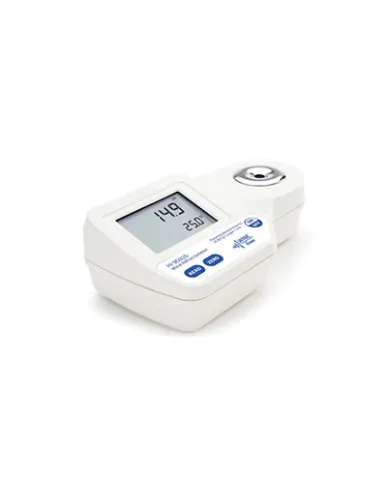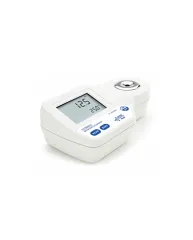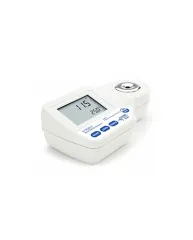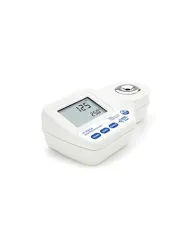Product

Portable Digital Refractometer for Potential Alcohol Analysis in Wine, Must and Juice According to EEC - Hanna Hi96816
Category :
Refractometer
Refractometer
Price :
Rp.5.800.000
More From Refractometer
Portable Digital Refractometer for Sugar (% Brix) Analysis in Wine, Must and Juice – Hanna Hi96811
The Hi96811 Digital Wine Refractometer converts the refractive index of a wine, juice or must sample to % Brix. This conversion is based on the tables found in the ICUMSA Methods Book (International Commission for Uniform Methods of Sugar Analysis) that documents the changes in refractive index with temperature for a percent by weight sucrose solution. Since the majority of sugar in grape juice and must is fructose and glucose instead of sucrose, the reading is sometimes referred to as “Apparent Brix”. Typical grapes at harvest will be between 19-24% Brix or degrees Brix (°Bx). The Hi96811 is an easy-to-use tool for winemakers for measuring sugar in grapes or must, in the field or in the lab
Rp.5.800.000
See DetailsPortable Digital Refractometer for Brix and Potential Alcohol Analysis in Wine, Must and Juice – Hanna Hi96813
The Hi96813 Digital Wine Refractometer converts the refractive index of the sample to sucrose concentration in units of percent by weight, % Brix (also referred to as °Brix). The conversion used is based on the ICUMSA Methods Book (International Commission for Uniform Methods of Sugar Analysis). Since the majority of sugar in grape juice is fructose and glucose and not sucrose, the reading is sometimes referred to as “Apparent Brix”
Rp.5.800.000
See DetailsPortable Digital Refractometer for Brix-Sugar Analysis in Wine, Juice and Must – Hanna Hi96814
The Hi96814 Digital Wine Refractometer converts the refractive index of wine juice or must to sucrose concentration in units of percent by weight, % Brix (also referred to as °Brix). The conversion used is based on the ICUMSA Methods Book (International Commission for Uniform Methods of Sugar Analysis). Since the majority of sugar in grape juice is fructose and glucose and not sucrose, the reading is sometimes referred to as “Apparent Brix”
Rp.5.800.000
See Details



